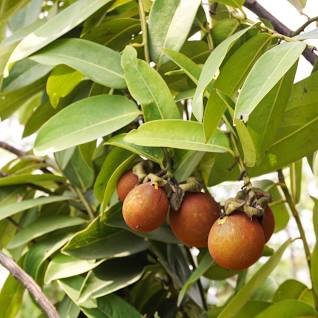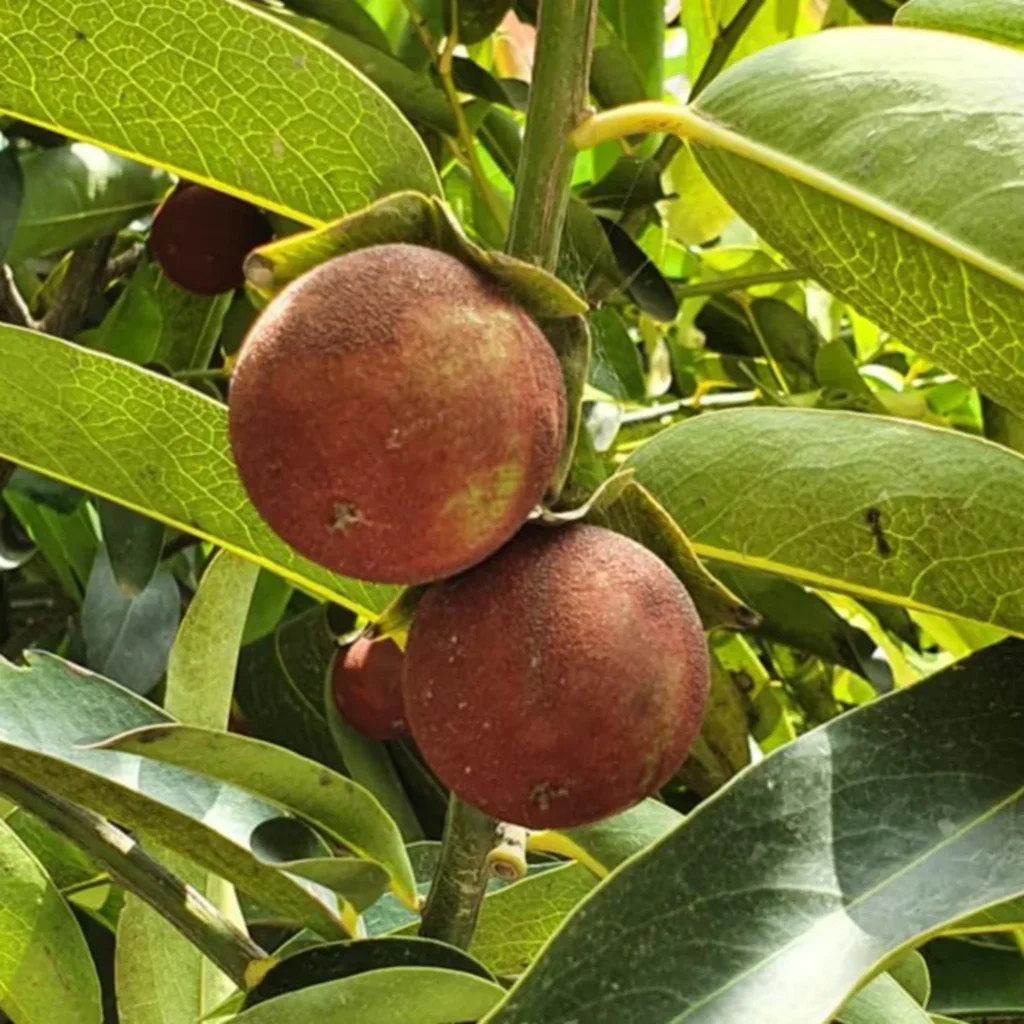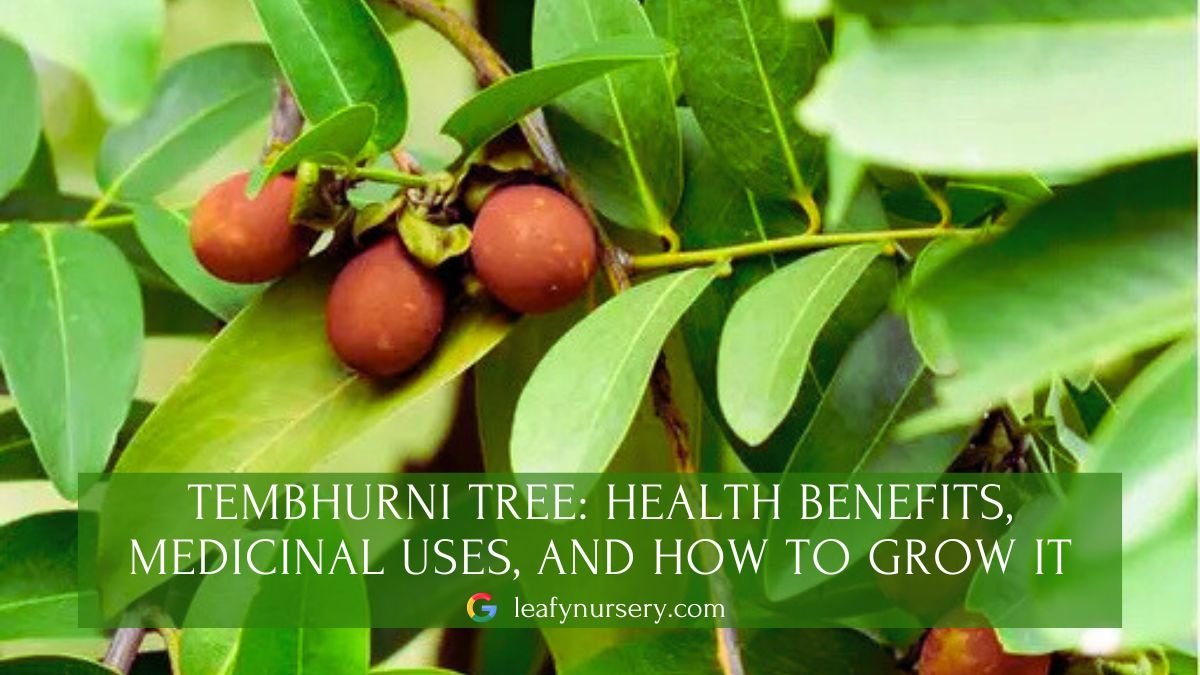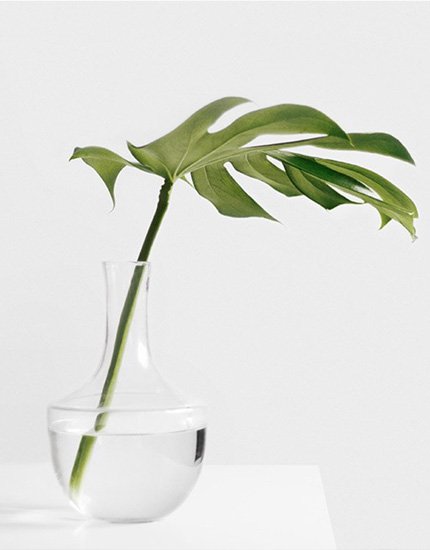The Tembhurni tree (Diospyros malabarica) is a powerful medicinal tree native to India. Widely appreciated for its many health benefits, this tree is admired not only for its beauty but also for its strong medicinal properties. It has been a staple in traditional medicine for centuries, particularly in Ayurveda, where it is used for treating various ailments. The Tembhurni tree is known for its resilience in dry, semi-arid regions and its ability to support local biodiversity and help prevent soil erosion.
- Introduction to the Tembhurni Tree: A Powerful Herb in Nature
- Scientific Classification of the Tembhurni Tree (Diospyros malabarica)
- Common names
- Tembhurni Tree in Marathi
- Tembhurni Tree Benefits
- Medicinal Uses of the Tembhurni Tree
- Tree Description of the Tembhurni Tree
- Tembhurni Tree in Ayurveda
- How to Plant Tembhurni Tree from Seeds
- Health Benefits of the Tembhurni Tree: Boost Your Wellness Naturally
- Conclusion
Introduction to the Tembhurni Tree: A Powerful Herb in Nature
The Tembhurni tree is known for its medicinal value and ecological benefits. It grows predominantly in tropical regions of India, where it has been used for centuries in traditional health practices. In local Marathi communities, the Tembhurni tree is cherished not just for its beauty but also for its health-promoting properties.
The tree is known for its distinct leaves and bark packed with nutrients. It has been used in various treatments and remedies, making it an essential part of traditional herbal medicine.
Scientific Classification of the Tembhurni Tree (Diospyros malabarica)

- Kingdom: Plantae
- Division: Angiosperms
- Class: Eudicots
- Order: Fabales
- Family: Ebenaceae
- Subfamily: Mimosoideae
- Genus: Diospyros
Common names
English: Gaub tree, Malabar ebony, Black-and-white ebony
Hindi: Gaub
Marathi: Tembhurni, Temburi
Tembhurni Tree in Marathi
In Marathi-speaking regions, the Tembhurni tree (टेम्भूर्णी) symbolizes health and wellness. It is commonly found in rural areas, where local people have used its bark, leaves, and other parts for centuries to treat various health conditions. The tree’s deep-rooted connection with traditional medicine has made it an integral part of the local culture.
Traditional Uses:
- In some parts of Maharashtra, the tree’s leaves and bark are used to prepare herbal teas that aid in digestion and detoxification.
- The bark is often powdered and applied to wounds and cuts to promote healing due to its antiseptic and anti-inflammatory properties.
- Herbal poultices made from the tree’s leaves are commonly used to reduce inflammation and relieve pain, particularly in joint and muscle-related issues.
These age-old practices have earned the Tembhurni tree a cherished place in the hearts of many, particularly in rural areas, where it continues to be an essential part of traditional healing..

Image credit: treesofempressgarden and veliyathgarden
Tembhurni Tree Benefits
The Tembhurni tree offers many health benefits, making it an essential part of traditional and modern medicine. Below is a table listing some of its most common benefits:
| Benefit | Description |
| Anti-inflammatory | The bark and leaves of the Tembhurni tree are known for their anti-inflammatory properties, helping to reduce swelling and pain. |
| Antioxidant-rich | Rich in antioxidants, the tree helps fight free radicals in the body, which can reduce oxidative stress and protect against cell damage. |
| Boosts Immunity | The leaves and bark are believed to strengthen the immune system, making the body more resilient to infections and illnesses. |
| Digestive Health | The tree aids in promoting digestion and is traditionally used to treat stomach-related ailments like indigestion and bloating. |
| Skin Care | The tree’s antibacterial properties help treat skin conditions such as acne, rashes, and minor wounds, promoting faster healing. |
These are just a few of the many benefits of the Tembhurni tree.
Medicinal Uses of the Tembhurni Tree
The Tembhurni tree has been a staple in herbal medicine due to its many medicinal uses. Below are some of the key ways this tree can be used:
- The Tembhurni tree (Diospyros malabarica) has been a staple in herbal medicine for centuries due to its powerful medicinal properties. Below are some of the key ways this tree is used in traditional healing:
- Digestive Disorders:
The Tembhurni tree is commonly used to treat indigestion and other digestive issues. Drinking a tea made from the leaves can help relieve bloating, constipation, and promote better digestion overall. - Skin Conditions:
The bark and leaves of the tree can be applied topically to treat wounds, cuts, and rashes. Due to its antiseptic and anti-inflammatory properties, the Tembhurni tree helps speed up the healing process and reduce skin irritation. - Fever and Inflammation:
Extracts from the Tembhurni tree are often used to treat fever and reduce inflammation. Its anti-inflammatory properties make it particularly useful for conditions like arthritis and other inflammatory disorders. - Respiratory Health:
The leaves of the Tembhurni tree are sometimes boiled in water, and the resulting steam is inhaled to help treat respiratory issues like asthma, bronchitis, and coughs. This natural remedy can soothe the airways and help with breathing difficulties..
Tree Description of the Tembhurni Tree
The Tembhurni tree (Diospyros malabarica) is a medium to large-sized deciduous tree that is native to India, particularly in the tropical and subtropical regions. Known for its striking beauty and valuable medicinal properties, this tree thrives in arid and semi-arid climates, where it plays a vital role in local ecosystems.
Here is a detailed description of the Tembhurni tree:
Size and Structure
- Height: The Tembhurni tree can grow up to 10 meters (around 33 feet) in height, though it is typically found around 6–8 meters (20–26 feet) in height in many regions.
- Canopy: The tree has a spreading canopy, which provides moderate shade. It is known for its ability to withstand hot and dry conditions, making it a resilient species for harsher environments.
Leaves
- Shape and Size: The leaves of the Tembhurni tree are pinnately compound, meaning each leaf consists of several smaller leaflets arranged alternately along a central stem.
- Color: The leaves are typically a light green to yellowish-green in color, turning yellow during the dry season before falling off.
- Texture: The leaflets are feathery and finely divided, giving the tree a delicate and airy appearance. The leaves are soft to the touch and emit a slight fragrance when crushed.
Flowers
- Appearance: The Tembhurni tree produces small, yellow, ball-shaped flowers that grow in dense, spherical clusters. These flowers are highly attractive to bees and other pollinators, making the tree a valuable asset to local biodiversity.
- Pollination: The flowers are known to attract a variety of pollinators, particularly insects like bees, which help in the fertilization process.
Fruits
- Shape and Size: The tree produces flat, pod-like fruits, which are typically brown or reddish-brown when mature. These pods contain several seeds that are dispersed naturally when the fruit splits open.
- Uses: The seeds are sometimes used in traditional remedies, and the pods can be utilized in local medicinal practices, although their primary use is not as a food source.
Bark
- Texture: The bark of the Tembhurni tree is dark brown and rough in texture. As the tree matures, the bark becomes more pronounced, with distinct ridges and fissures.
- Medicinal Use: The bark is an essential part of the tree’s medicinal profile. It is often powdered and used topically to treat wounds and other skin conditions due to its antibacterial and anti-inflammatory properties.
Roots
- Structure: The Tembhurni tree has deep, robust roots that enable it to thrive in dry, sandy soils. The deep roots help the tree access water from deeper layers of the soil, which is essential in arid regions.
- Ecological Role: The tree’s ability to fix nitrogen in the soil makes it valuable for improving soil fertility. It also plays a role in soil conservation, as its roots help prevent soil erosion in regions prone to desertification.
Ecological Role
- The Tembhurni tree is crucial for its ability to fix nitrogen, enriching the soil and contributing to ecosystem health. Its deep roots also help maintain soil stability and reduce the risk of erosion in arid environments.
- The tree’s flowers attract a wide variety of pollinators, supporting local biodiversity.
Wood
- The wood of the Tembhurni tree is hard, making it suitable for various local uses. While it’s not as widely used as other hardwoods, the tree provides valuable timber in some rural areas for construction and crafting.
Tembhurni Tree in Ayurveda
In Ayurveda, the Tembhurni tree (Diospyros malabarica) is highly valued for its ability to restore balance to the body. It is regarded as a natural remedy for various ailments, from digestive issues to skin disorders, thanks to its cooling, anti-inflammatory, and antiseptic properties.
Ayurvedic Uses:
- Pitta Dosha:
The Tembhurni tree is considered cooling for the body, making it particularly beneficial for balancing Pitta dosha. It is commonly used to address skin inflammation, acidity, and other Pitta-related conditions. By calming the heat in the body, it helps soothe irritated skin and promote overall comfort. - Vata Dosha:
The tree also helps in reducing Vata imbalances, especially in the context of promoting digestion and alleviating joint pain. The anti-inflammatory properties of the Tembhurni tree are used to soothe joint discomfort, support digestive functions, and help with overall Vata-related issues like dry skin and stiffness.
How to Plant Tembhurni Tree from Seeds
Growing the Tembhurni tree is relatively simple, but it does require patience. If you’re interested in planting the tree, here’s a simple guide:
Step Description
| Step | Description |
| Seed Selection | Choose high-quality seeds from a reputable source, such as a trusted nursery or online supplier. Ensure the seeds are fresh and viable for planting. |
| Prepare the Soil | The Tembhurni tree prefers well-drained, sandy soil. Make sure the soil is enriched with organic matter to support healthy growth. You can add compost or other organic material to improve the soil’s fertility. |
| Planting Depth | Plant the seeds 1–2 cm deep into the soil. Ensure the seeds are not planted too deep, as this can hinder germination. |
| Watering | Water the seeds gently but consistently, keeping the soil moist but not waterlogged. Overwatering can cause the seeds to rot, so ensure the drainage is adequate. |
| Temperature | The Tembhurni tree thrives in warm, tropical climates. Maintain temperatures between 25°C and 35°C (77°F to 95°F) for optimal growth. Avoid planting in areas with frequent cold spells, as the tree is sensitive to frost. |
| Maintenance | As the tree grows, prune regularly to encourage healthy growth and a straight trunk. Removing dead or damaged branches will help the tree focus its energy on new growth. The Tembhurni tree requires full sunlight for most of the day. Make sure to plant it in an area that receives at least 6–8 hours of sunlight per day. Once the seedlings have grown large enough, you can transplant them to a larger pot or directly into the ground. Ensure the transplanting site has well-drained soil and enough space for the tree to grow. |
Where to Get Tembhurni Tree Seeds
You can find Tembhurni tree seeds at local nurseries or online gardening platforms and forest lands. Be sure to buy from a reputable source to ensure the seeds are of good quality.
Health Benefits of the Tembhurni Tree: Boost Your Wellness Naturally
The Tembhurni tree offers a variety of health benefits that can improve your well-being. Here’s a breakdown of its key health benefits:
| Health Benefits | How It Helps |
| Immune Boost | Strengthens the immune system, helping the body fight infections and remain resilient against illnesses. |
| Detoxification | Acts as a natural detoxifier, assisting the body in removing harmful toxins and promoting overall cleansing. |
| Anti-aging Properties | Rich in antioxidants, the tree helps reduce the appearance of wrinkles and fine lines, contributing to youthful skin. |
| Anti-cancer properties | Some studies suggest that the Tembhurni tree may have anti-cancer properties, though more research is needed to confirm these effects. |
| Improved Digestion | Promotes a healthy digestive system by improving bowel movements, reducing bloating, and easing discomfort. |
Conclusion
The Tembhurni tree is more than just a beautiful addition to the landscape. It offers a wide range of health benefits, from boosting immunity to aiding digestion. Whether you are interested in cultivating the tree or incorporating its medicinal properties into your wellness routine, the Tembhurni tree has something to offer.
By understanding the various uses and benefits of this incredible tree, you can harness its power to enhance your health and overall well-being.
To Order in bulk, Contact Leafy Nursery at +91 7709 112 274



